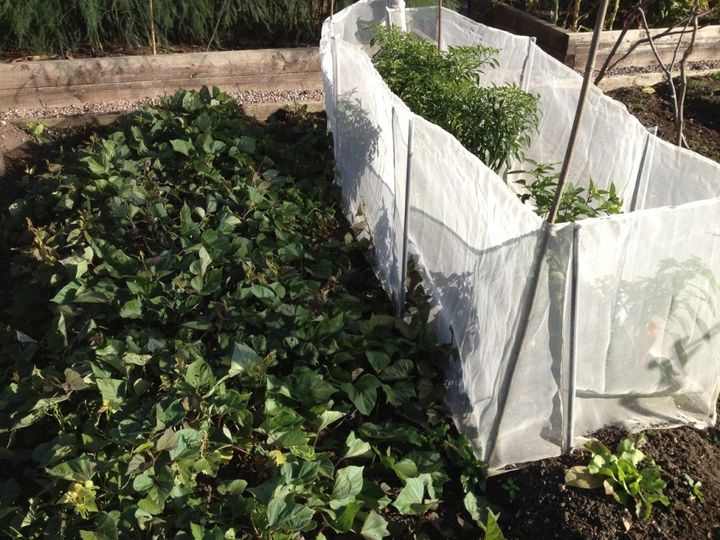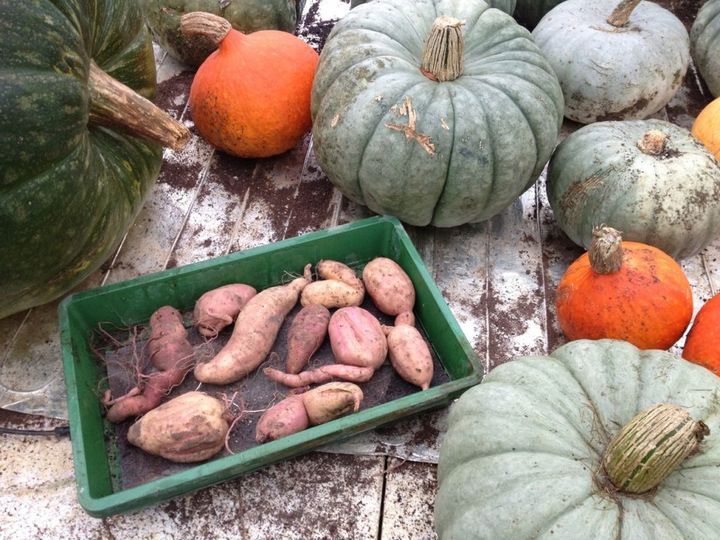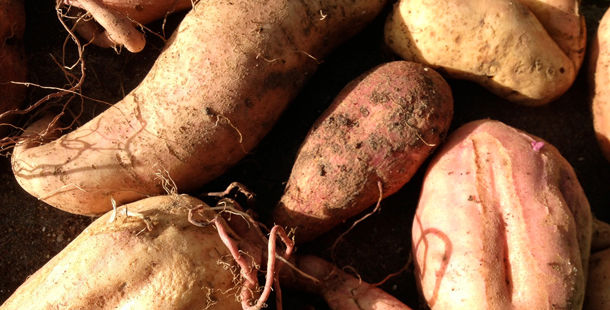This summer I had my first go at growing sweet potatoes. If I am completely honest I rather neglected them, putting them in late and failing to provide the necessary cosseting for them to give their best.
Summer’s a busy time and there’s always some well-intentioned experiment that falls by the wayside. Despite all this, they did grow and they did crop. I dug them up last week and the biggest are currently ‘curing’ in a heated propagator. Unsurprisingly, given the lack of TLC, the yield wasn’t huge but it wasn’t awful either. I am impressed, especially since they were planted outside. I’m now fired up to try again next year and will treat them properly this time.

The concept is really exciting. This is a tropical/sub-tropical plant in origin but much work has been done over recent years to breed a viable cultivar for UK conditions. Warmth is the key: they will perform best in a greenhouse border but you could try a large pot in a sunny conservatory. I think I can make room for a couple in the polytunnel next year. Failing that, choose a sheltered sunny spot outdoors. Planting into black plastic mulch will help, as will covering the plants with cloches. I did neither of these things.
Although it is technically possible to start from seed, a far more reliable method of propagation is to buy ‘slips’, small sections of tuber, from a seed company. Avoid supermarket tubers: they are unlikely to be suited to our climate and may harbour disease. The same goes for supermarket potatoes and garlic, incidentally. The slips will be delivered in spring. Pot them up immediately and cover with a clear plastic bag until they have rooted. Grow on somewhere warm and light, potting up as required (I was quite slow to do this too!) before gradually hardening them off and planting out in early June, after the last frost.

Sweet potatoes like a fertile, slightly acidic sandy loam and need regular watering to thrive. They do not like clay soils or being waterlogged. Planting into a raised bed or ridge of soil improves drainage and a mulch to conserve moisture is beneficial, as is fortnightly feeding. The plant is in the bindweed family but the inherent tastiness of its tubers goes a little way towards compensating for the havoc wreaked by its weedy garden relatives. Unsurprisingly then, the foliage produced is vine-like in habit and can grow up to 2m long. They can be trained up netting/supports or just left to trail across the ground. Tender young leaves can be eaten like spinach, apparently, but I figured that my plants needed all the leaves they could get! There is no need to earth them up, as with ordinary potatoes. In fact, despite the name, the two plants are only very distantly related.
The underground tubers are ready to harvest in autumn, once the foliage has died back. They must be dug up carefully, as they bruise easily at first. The skins can be toughened and keeping qualities improved by ‘curing’ them somewhere warm, sunny and humid for a week, which simply means outside in the tropics but in the UK in November means inside a propagator or even an airing cupboard. It is a very valuable crop in hot, humid counties because it stores well despite the climate. There are many cultivars worldwide and tubers come in other shapes and colours besides the elongated orange one seen most commonly in shops here.
Have a look at some of Jamie’s own sweet potato recipes or learn all about sweet potatoes at the Vegepedia.























